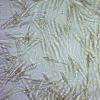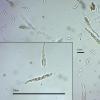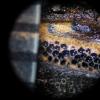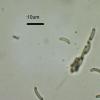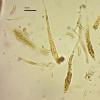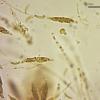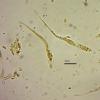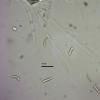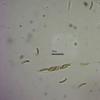
09-01-2026 10:08
 Blasco Rafael
Blasco Rafael
Hola, en el mismo habitat que la anteriorRetamaDia

08-01-2026 21:22
 Blasco Rafael
Blasco Rafael
Hola, He recogido esta muestra de Orbilia sobre Re

07-01-2026 10:24
 Danny Newman
Danny Newman
Pezicula sp. on indet. hardwood Appalachian Highl

07-01-2026 22:22
 Danny Newman
Danny Newman
Tatraea sp. on indet. hardwood The Swag, Great Sm

07-01-2026 17:29
 Marc Detollenaere
Marc Detollenaere
Dear Forum,On a barkless Populus I found some smal

10-11-2021 17:33
 Riet van Oosten
Riet van Oosten
Add-on topic http://www.ascofrance.com/forum/7059

07-01-2026 10:05
 Danny Newman
Danny Newman
cf. Chaetospermum on XylariaCosby Campground, Grea

02-01-2026 17:43
MARICEL PATINOHi there, although I couldn't see the fruitbody, I

04-01-2026 17:45
 Stephen Martin Mifsud
Stephen Martin Mifsud
I was happy to find these orange asmocyetes which
Eutypa leioplaca or E. lata.... or something else?
Steve Clements,
10-08-2015 12:15
On a trouvé cet Asco avec des spores bruns sur Fagus. En lisant Ellis & Ellis je crois il y a peut-etre deux possibilités – Eutypa leioplaca et E. lata. Tous les deux avons des spores 8-12 x 2, et tout les deux sont de couleur gris. J'ai decidé qu'il est E. leioplaca a causé il etait sur Fagus. J'ai raison?
Cordialement,
Steve
Hi,
We found this grey Eutypa on a twig by a fallen Beech (Fagus sylvatica) at Longshaw Estate, Peak District, Northern England on 29/7/15, in mixed woodland at apporx 300m altitude. The most distinctive feature was the grey colour of the fungus, and the rolled-back bark. Perithecia are about 0.1mm in size, but the released jelly swells to about 0.25 mm diameter. The necks protrude a very short distance – hardly at all.
I measured the spores at up to 11 x 2 um, but typically 9-10 x 1.5-2. En masse they are pale brown. The asci are 8 spored, up tp 90 um long.
From Ellis & Ellis there seem to be two choices – E. leioplaca, which has been recorded just once in the region, and E. lata. As the latter has "necks protruding, black, shining" and perithecia to 0.5 mm" I suspect it may be the former, which has a less detailed description, but is characteristic of Beech.
Looking at Rapaz (1984) I presume Eutypa leioplaca is E. lejoplaca. I also presume that Ellis & Ellis is inadequate for this genus.
Microscopy in water (spores in Methylene Blue).
I have plenty of material if further work is needed.
Regards,
Steve
Eduard Osieck,
10-08-2015 21:03
Re : Eutypa leioplaca or E. lata.... or something else?
Hi Steve,
No, "unfortunately" E. leioplaca and E. lejoplaca (read E. leptoplaca) are different species which only seem to differ in the absence or presence of amyloidity of the ascus top (rather difficult to see in the latter species, see an earlier topic on this forum).
Did you use the key by Rappaz (1987)? This monograph is available at the address:
http://doc.rero.ch/record/29136?ln=en. An important difference between E. lata and E. leioplaca/ lejoplaca is the presence of cruciform ostioles which may be seen on your pictures. That would exclude E. lata with roundish ostioles.
Hope this helps a bit,
Eduard
No, "unfortunately" E. leioplaca and E. lejoplaca (read E. leptoplaca) are different species which only seem to differ in the absence or presence of amyloidity of the ascus top (rather difficult to see in the latter species, see an earlier topic on this forum).
Did you use the key by Rappaz (1987)? This monograph is available at the address:
http://doc.rero.ch/record/29136?ln=en. An important difference between E. lata and E. leioplaca/ lejoplaca is the presence of cruciform ostioles which may be seen on your pictures. That would exclude E. lata with roundish ostioles.
Hope this helps a bit,
Eduard
Steve Clements,
10-08-2015 21:37
Re : Eutypa leioplaca or E. lata.... or something else?
Thank you so much Eduard, that is very useful.
I used the 1984 key by Rappaz in "Mycotaxon", Francois Rappaz, "Les Especes Sanctionees du Genre Eutypa" in Mycotaxon, Jul-Sep 1984
http://www.ascofrance.com/uploads/forum_file/1984-20-567-0001.pdf
in which he states re. Eutypa "... la confusion est encore plus grande"!. My limited French is able to cope with this short key.
It seems that the anamorphic conidial state is an important factor in defining Eutypa - as I'm finding out is the case with other kinds of ascomycetes.
Eutypa lejoplaca isn't listed in the British and Irish Fungi Records (FRDBI) http://www.fieldmycology.net/GBCHKLST/gbspecies.asp?intFDNum=1950
so I think E. leioplaca would be reasonable for my specimen.
Best regards,
Steve
I used the 1984 key by Rappaz in "Mycotaxon", Francois Rappaz, "Les Especes Sanctionees du Genre Eutypa" in Mycotaxon, Jul-Sep 1984
http://www.ascofrance.com/uploads/forum_file/1984-20-567-0001.pdf
in which he states re. Eutypa "... la confusion est encore plus grande"!. My limited French is able to cope with this short key.
It seems that the anamorphic conidial state is an important factor in defining Eutypa - as I'm finding out is the case with other kinds of ascomycetes.
Eutypa lejoplaca isn't listed in the British and Irish Fungi Records (FRDBI) http://www.fieldmycology.net/GBCHKLST/gbspecies.asp?intFDNum=1950
so I think E. leioplaca would be reasonable for my specimen.
Best regards,
Steve
Chris Yeates,
11-08-2015 13:27

Re : Eutypa leioplaca or E. lata.... or something else?
I think Eutypa leioplaca and Eutypa lejoplaca do refer to the same taxon - the latter being an orthographic variant, used, for example by Rappaz in "Taxonomie et nomenclature des Diatrypacées à asques octosporés" (where, significantly, the form "Eutypa leioplaca" is not mentioned - impossible if two taxa were involved).
The question of the amyloid/inamyloid reaction of the ascus apices concerns the separation of E. leioplaca from E. leptoplaca. See:
http://www.ascofrance.com/search_forum/27030
amitiés
Chris
The question of the amyloid/inamyloid reaction of the ascus apices concerns the separation of E. leioplaca from E. leptoplaca. See:
http://www.ascofrance.com/search_forum/27030
amitiés
Chris
Steve Clements,
11-08-2015 14:00
Re : Eutypa leioplaca or E. lata.... or something else?
Hi Chris,
Yes, I did suspect that as "j" is used to represent "y" in the International Phonetic Alphabet and German of course.
The alternative spelling which I like best is Chlorophyllum rachodes (20,200 hits on Google)/rhacodes (14.400 hits). Looks like the FRDBI has decided on C. rachodes: Kibby and Henrici say both are in use (Field Mycology 12 (3)).
On yet another diversion - do you know of a good guide to Powdery Mildews (apart from Ellis & Ellis)?
Cheers,
Steve
Yes, I did suspect that as "j" is used to represent "y" in the International Phonetic Alphabet and German of course.
The alternative spelling which I like best is Chlorophyllum rachodes (20,200 hits on Google)/rhacodes (14.400 hits). Looks like the FRDBI has decided on C. rachodes: Kibby and Henrici say both are in use (Field Mycology 12 (3)).
On yet another diversion - do you know of a good guide to Powdery Mildews (apart from Ellis & Ellis)?
Cheers,
Steve
Chris Yeates,
11-08-2015 14:38

Re : Eutypa leioplaca or E. lata.... or something else?
Hi Steve
re powdery mildews the key work is http://www.apsnet.org/apsstore/shopapspress/Pages/51892.aspx
For Europe, although it is slightly out of date following newer studies included in the former book http://www.amazon.co.uk/The-Powdery-Mildews-Erysiphales-Europe/dp/3827406692 is still exceptionally useful. The main differences are things like Microsphaera being largely redisposed into Erysiphe et al., and Sphaerotheca to Podosphaera (you can always check Mycobank or Species Fungorum for current usage).
I'll send you some papers etc this evening . . .
regards
Chris
re powdery mildews the key work is http://www.apsnet.org/apsstore/shopapspress/Pages/51892.aspx
For Europe, although it is slightly out of date following newer studies included in the former book http://www.amazon.co.uk/The-Powdery-Mildews-Erysiphales-Europe/dp/3827406692 is still exceptionally useful. The main differences are things like Microsphaera being largely redisposed into Erysiphe et al., and Sphaerotheca to Podosphaera (you can always check Mycobank or Species Fungorum for current usage).
I'll send you some papers etc this evening . . .
regards
Chris
Eduard Osieck,
11-08-2015 15:33
Re : Eutypa leioplaca or E. lata.... or something else?
Hi Chris,
Of course you are right about E. leioplaca/ lejoplaca. I meant E. leptoplaca indeed. I will correct it immediately.
Eduard
Of course you are right about E. leioplaca/ lejoplaca. I meant E. leptoplaca indeed. I will correct it immediately.
Eduard
Steve Clements,
11-08-2015 17:20
Re : Eutypa leioplaca or E. lata.... or something else?
Thanks a million Chris,
I'm working on Longshaw's PMs which have been quite neglected,
Steve
I'm working on Longshaw's PMs which have been quite neglected,
Steve
Eduard Osieck,
12-08-2015 09:59
Re : Eutypa leioplaca or E. lata.... or something else?
Hi Chris,
I guess this one is more up-to-date (2012):
http://www.cbs.knaw.nl/index.php/cbs-biodiversity-series/49-cbs-biodiversity-series-11 ?
Eduard
I guess this one is more up-to-date (2012):
http://www.cbs.knaw.nl/index.php/cbs-biodiversity-series/49-cbs-biodiversity-series-11 ?
Eduard
Jacques Fournier,
13-08-2015 16:51

Re : Eutypa leioplaca or E. lata.... or something else?
Hi Steve,
sorry for the late answer, I had no access to the Internet since Friday.
To me your fungus does not lok like E. lejoplaca, which is affiliated to Acer spp.n, not to Fagus.
Eutypa lata might be an option, but the perithecial diameter (100µm??) does not fit this species and as far as i know, none of temperate diatrypaceous fungi.
Diatrype decorticata might be considered too. Could you please make a vertical section across the stroma to check whether stromatal extensions (pillar-like, photo attached) reach the wood (Diatrype) or not (Eutypa).
We also need to know the reaction of apical ring to iodine (IKI or Melzer after 3% KOH pretreatment).
Finally I agree with you that Ellis & Ellis' book is not the most efficient tool to identify Diatrypaceae.
Cheers,
Jacques
sorry for the late answer, I had no access to the Internet since Friday.
To me your fungus does not lok like E. lejoplaca, which is affiliated to Acer spp.n, not to Fagus.
Eutypa lata might be an option, but the perithecial diameter (100µm??) does not fit this species and as far as i know, none of temperate diatrypaceous fungi.
Diatrype decorticata might be considered too. Could you please make a vertical section across the stroma to check whether stromatal extensions (pillar-like, photo attached) reach the wood (Diatrype) or not (Eutypa).
We also need to know the reaction of apical ring to iodine (IKI or Melzer after 3% KOH pretreatment).
Finally I agree with you that Ellis & Ellis' book is not the most efficient tool to identify Diatrypaceae.
Cheers,
Jacques
Steve Clements,
14-08-2015 21:52
Re : Eutypa leioplaca or E. lata.... or something else?
Bon soir Jacques,
Merci beaucoup, vous êtes très aimable.
I cannot be certain about the type of wood as it was part of a pile of sticks.
I have re-examined the specimen.
The perithecia are in fact up to 0.25 mm across. and have apical extensions.
On pre-treating with 3% KOH and addition of Meltzer's or Lugol I had difficulty finding intact asci - but there seemed to be no blue reaction. I then used the two iodine reagents without KOH and was able to see the asci more easily.
I've attached a number of micrographs, all except one at x 1000 (oil immersion), using an LED microscope.
Cordialement,
Steve
Merci beaucoup, vous êtes très aimable.
I cannot be certain about the type of wood as it was part of a pile of sticks.
I have re-examined the specimen.
The perithecia are in fact up to 0.25 mm across. and have apical extensions.
On pre-treating with 3% KOH and addition of Meltzer's or Lugol I had difficulty finding intact asci - but there seemed to be no blue reaction. I then used the two iodine reagents without KOH and was able to see the asci more easily.
I've attached a number of micrographs, all except one at x 1000 (oil immersion), using an LED microscope.
Cordialement,
Steve
Steve Clements,
18-08-2015 10:00
Re : Eutypa leioplaca or E. lata.... or something else?
Hi,
I've had a look at the paper by Francois Rappaz (MYCOLOGIA HELVETICA, 1987)
TAXONOMIE ET NOMENCLATIJRE DES DIATRYPACEES À ASQUES OCTOSPORES
Diatrypaceae, lignicolous unitunicate Ascomycetes with perithecia of the "Xylaria" type embedded in a pseudostroma and allantoid mostly one-celled ascospores.
It includes:
Diatrype: 56 species
Eutypa: 26 species and 2 varieties
Eutypella: 76 species and one variety
In addition there are another 3 genera with a dozen or so species altogether included.
I presume it is a group which is likely to be only accessible to specialists in the field, possibly with access to laboratory-grade equipment.
Is it unreasonable to expect the generalist field mycologist to deal with these fungi at this level?
Regards,
Steve
I've had a look at the paper by Francois Rappaz (MYCOLOGIA HELVETICA, 1987)
TAXONOMIE ET NOMENCLATIJRE DES DIATRYPACEES À ASQUES OCTOSPORES
Diatrypaceae, lignicolous unitunicate Ascomycetes with perithecia of the "Xylaria" type embedded in a pseudostroma and allantoid mostly one-celled ascospores.
It includes:
Diatrype: 56 species
Eutypa: 26 species and 2 varieties
Eutypella: 76 species and one variety
In addition there are another 3 genera with a dozen or so species altogether included.
I presume it is a group which is likely to be only accessible to specialists in the field, possibly with access to laboratory-grade equipment.
Is it unreasonable to expect the generalist field mycologist to deal with these fungi at this level?
Regards,
Steve
Jacques Fournier,
18-08-2015 14:22

Re : Eutypa leioplaca or E. lata.... or something else?
Hi Steve,
I agree with you, you summarized the situation fairly well.
It's a hard task but don't despair, there is a way to get more familiar with Rappaz' concepts and with the Diatrypaceae. Just collect well known species that are easy to identify because of their host specificity or salient characters and try to gradually understand how Rappaz describes them and what his terms mean. A good way to improve your French too!
Cheers,
Jacques
I agree with you, you summarized the situation fairly well.
It's a hard task but don't despair, there is a way to get more familiar with Rappaz' concepts and with the Diatrypaceae. Just collect well known species that are easy to identify because of their host specificity or salient characters and try to gradually understand how Rappaz describes them and what his terms mean. A good way to improve your French too!
Cheers,
Jacques
Steve Clements,
18-08-2015 15:01
Re : Eutypa leioplaca or E. lata.... or something else?
Merci bien encore Jacques;
Asco France est une bonne opportunité pour améliorer mon Français, est au même temps faire des études mycologiques. Nous sommes allé en France pour le premier temps il y a deux ans, après apprendre un peu de Français récemment au collège ici à Sheffield. On a monté une montagne dans le Parc de Volcans, dans les bois incroyables - je crois qu'il y aura beaucoup de champignons en automne en France - plus qu'on trouve comme d'habitude ici en Angleterre. Au sommet de la montagne un homme Français a parlé à nous, en Français, bien sur. "Bravo!" il a dit, "vous êtes de Yorkshire, n'est-ce pas?". J'étais très heureux.
Cordialement,
Steve
Asco France est une bonne opportunité pour améliorer mon Français, est au même temps faire des études mycologiques. Nous sommes allé en France pour le premier temps il y a deux ans, après apprendre un peu de Français récemment au collège ici à Sheffield. On a monté une montagne dans le Parc de Volcans, dans les bois incroyables - je crois qu'il y aura beaucoup de champignons en automne en France - plus qu'on trouve comme d'habitude ici en Angleterre. Au sommet de la montagne un homme Français a parlé à nous, en Français, bien sur. "Bravo!" il a dit, "vous êtes de Yorkshire, n'est-ce pas?". J'étais très heureux.
Cordialement,
Steve




